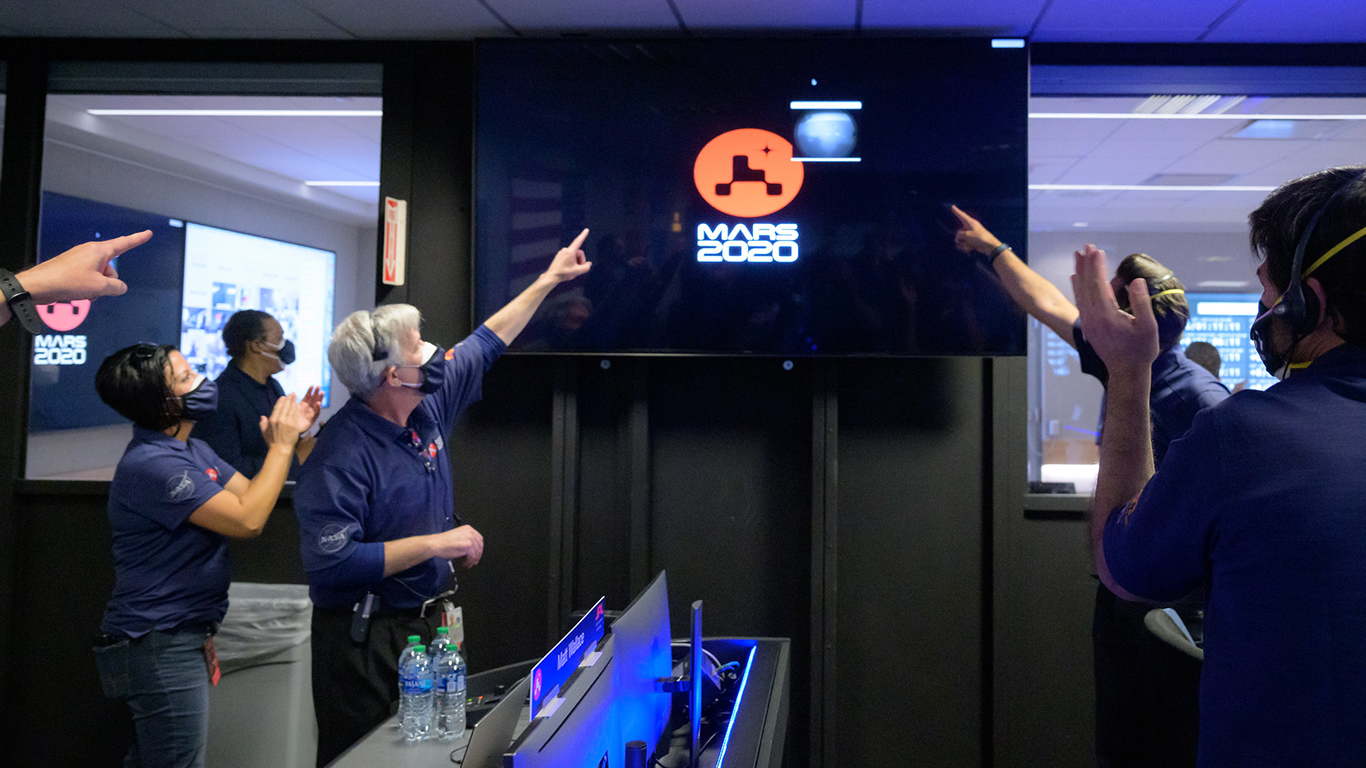

News
NASA aces most challenging Mars rover landing to date
After a nearly 300 million mile (480 million kilometer), seven-month-long journey, the world watched as NASA’s Mars 2020 Perseverance mission successfully completed the most challenging and precise landing the agency has ever attempted on Thursday (Feb. 18). Perseverance is NASA’s fifth rover and overall ninth mission to successfully land on the Red Planet.
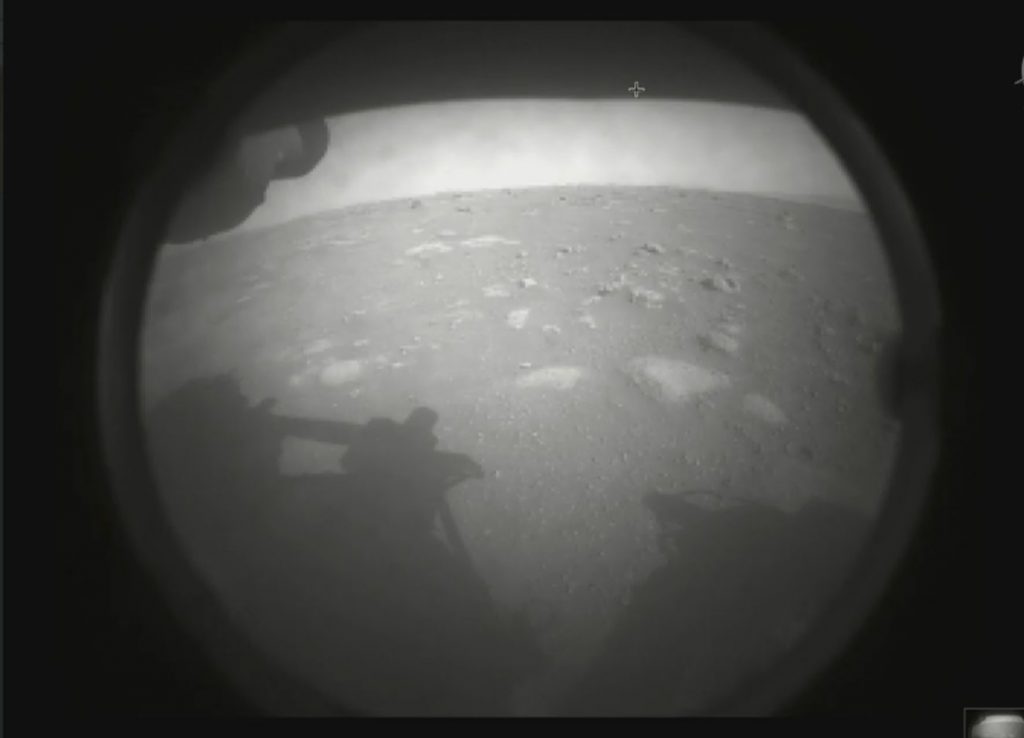
On Thursday afternoon, the alien invader punched through the relatively thin Martian atmosphere streaking across the sky at a blazing 12,100 mph (19,500 kph). Then it shed a few layers, deployed the largest-ever supersonic parachute, and slowed down just enough to use a rocket-propelled crane to drop an autonomous, nuclear-powered, robotic astrobiologist called Perseverance on the surface of Mars.
Flawlessly completing the entry, descent, and landing sequence of its mission to land in Mars’ hostile Jezero Crater, NASA’s Mars 2020 Perseverance mission officially marked the completion of its interplanetary travel phase and began its mission to collect evidence of ancient, microbial Martian life.
Getting to Mars
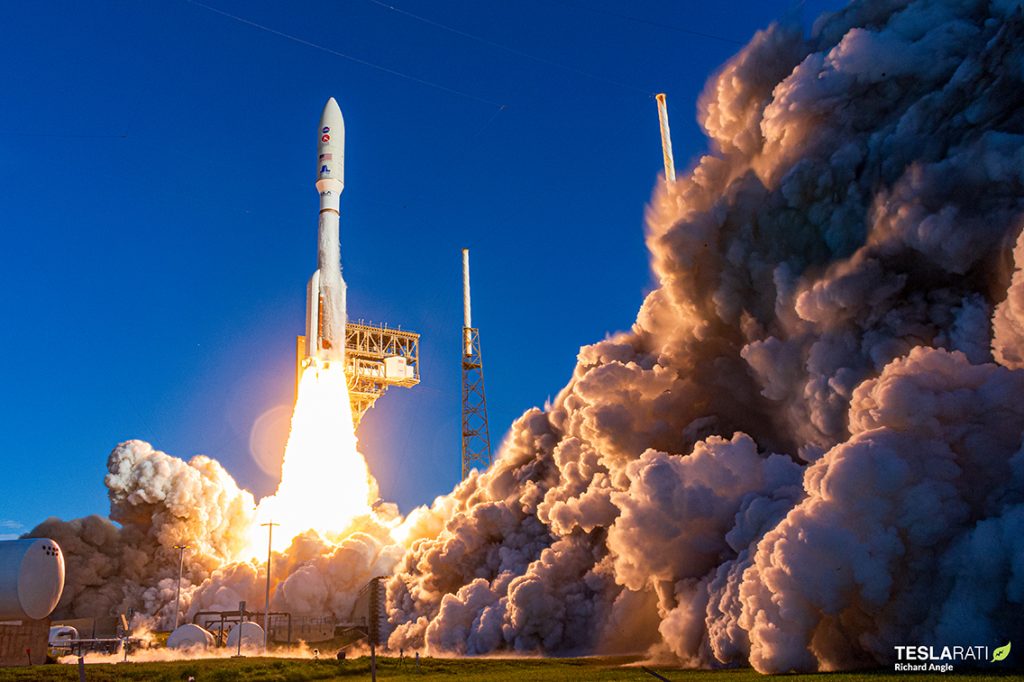
On July 30, 2020, NASA’s Mars 2020 Perseverance mission launched aboard a United Launch Alliance Atlas V 541 rocket from Space Launch Complex 41 at Cape Canaveral Space Force Base. Aboard that rocket was NASA’s most ambitious Mars mission to date. The launch phase of the mission suffered a few minor delays ultimately shifting the launch date from July 18, 2020 to July 30, 2020. However, ULA’s Atlas V first stage rocket and Centaur upper stage delivered NASA’s Mars 2020 Perseverance mission into such an accurate trajectory that the 2,260 lb (1,025 kg) rover landed on its specified February 18 landing date despite the delays in the launch timeline.
In total, three missions to Mars – China’s Tianwen-1, the United Arab Emirates Hope Probe, and NASA’s Perseverance – left Earth in the summer of 2020. All three missions targeted to leave Earth prior to August to best take advantage of the minimal distance between the planets during what is called opposition. The opposition between Earth and Mars only occurs once every 22 months. If the Perseverance mission had missed its launch date it would’ve had to wait until 2022 for a chance to travel to the Red Planet.
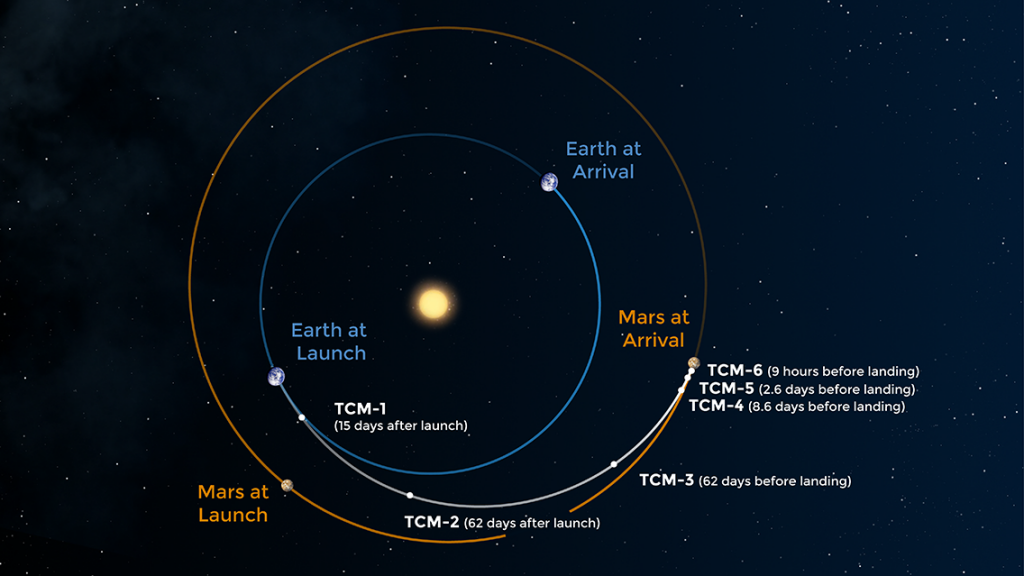
Entry, Descent, and Landing – a controlled disassembly
As Perseverance descended into the Martian atmosphere the Cruise Phase – hardware that propelled the spacecraft through space for seven months – was jettisoned. The Perseverance rover safely tucked inside the aeroshell and protected by a robust heat shield soared through the thin Martian atmosphere enduring an extreme amount of friction that produced heat energy that reached up to 2,370 degrees Fahrenheit (about 1,300 degrees Celsius).
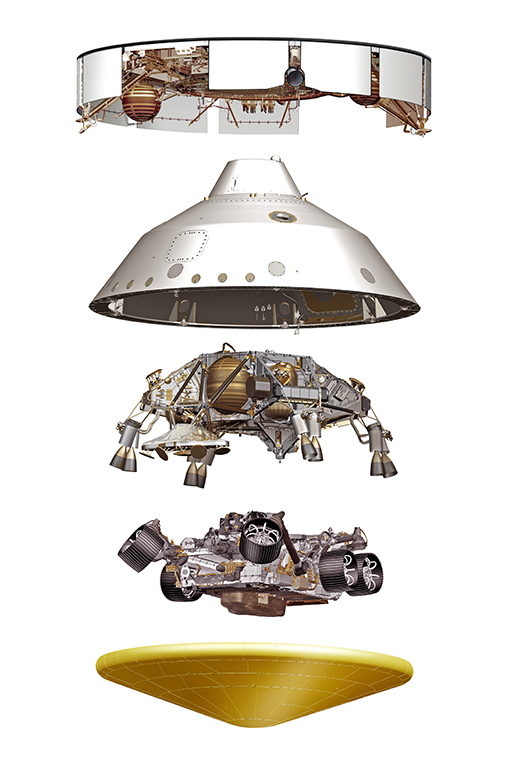
Once through the period of peak heating the heat shield was jettisoned exposing Perseverance to the Martian environment for the first time. Then about 7 miles (11 kilometers) from the surface the largest supersonic parachute NASA has ever sent to another planet – 70.5 feet (21.5 meters) in diameter – was deployed drastically slowing the spacecraft.
While still descending, the controlled descent module – called the sky crane – separated from the backshell about 1.3 miles (2.1 kilometers) above the surface to free-fly in the Martian atmosphere. The descent module used a new landing technology called Terrain-Relative Navigation used a constant stream of visual input and guidance collected from the Vision Compute Element and Rover Compute Element to determine the safest reachable landing site.
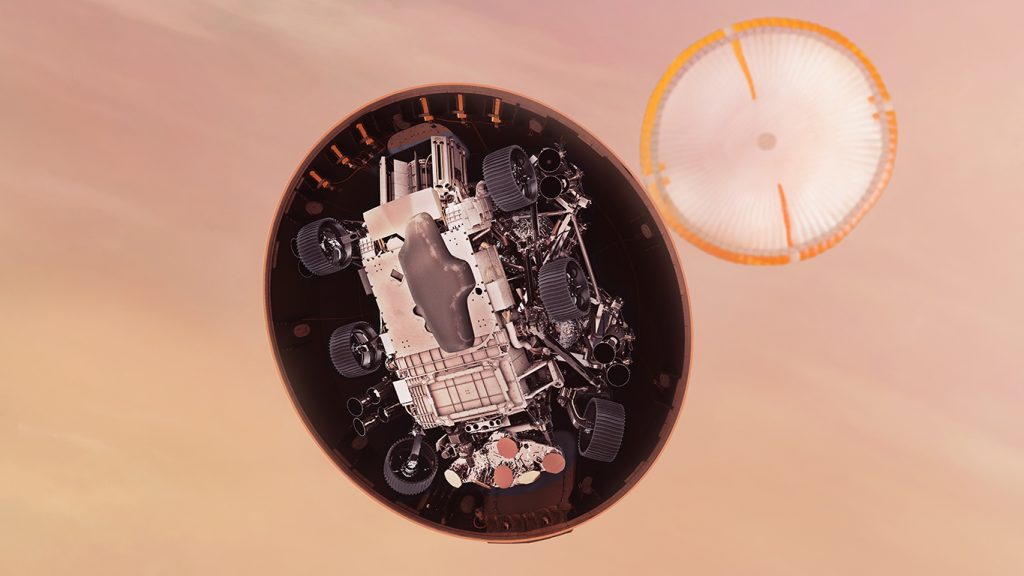
The throttleable rockets on the powered descent module steered the rover to its landing spot in Mars’ Jezero Crater and slowed to approximately 1.7 mph (2.7 kph) about 66 feet (20 meters) above the Martian surface. Perseverance was then lowered using a system of Nylon cords which were autonomously severed upon touchdown. The final stage of the controlled disassembly was for the sky crane to throttle its rockets back up and fly away for a crash landing a safe distance from the rover.
Ultimately, the Perseverance rover landed about a kilometer south of the intended delta of the Jezero Crater.
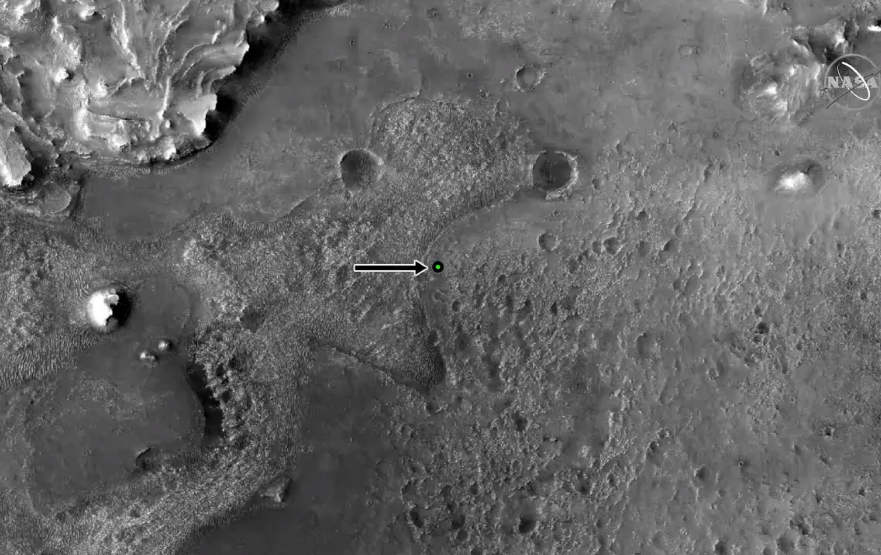
Perseverance made it to Mars, now what?
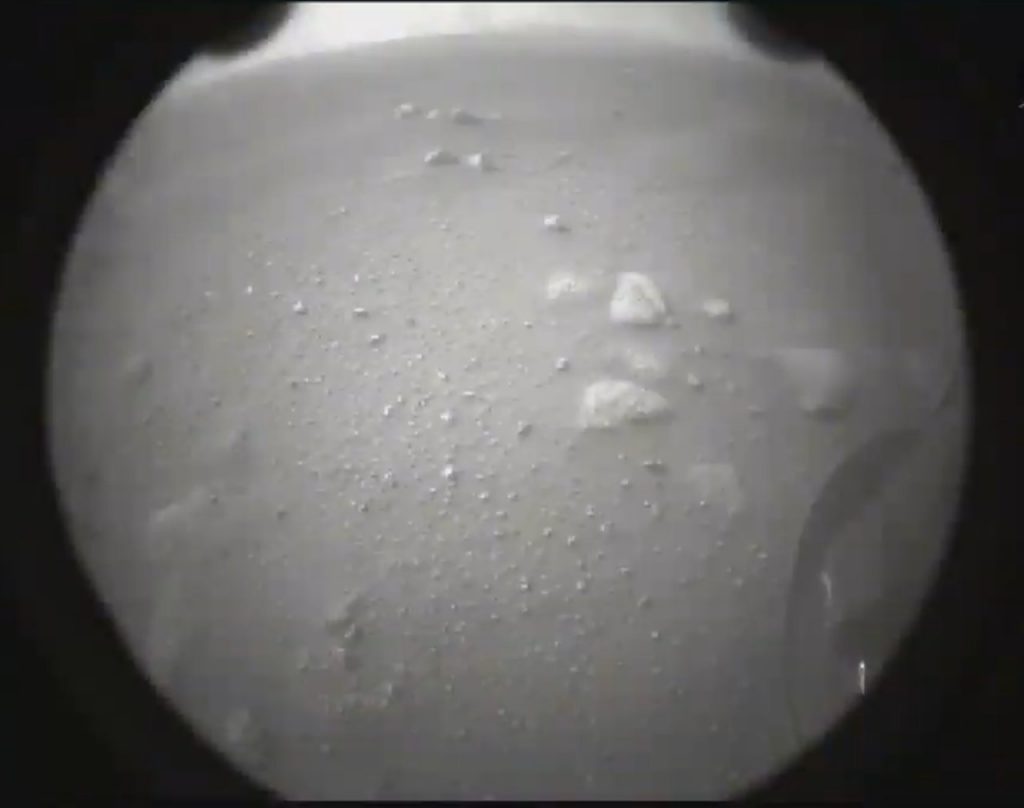
Getting to Mars was only the first of many milestones that Perseverance is expected to achieve during its projected one Mars year-long mission – about 687 Earth days. Now that the rover has touched down the science will begin.
First and foremost once Perseverance stretched its legs, so to speak, the first event took place just minutes after landing. Perseverance captured photos of the Martian surface with a pair of engineering cameras called Hazard Cameras mounted to the front and back of the rover.
The upgraded Navigation and Hazard cameras feature the capability to capture imagery of the Martian surface in 20 megapixel high-definition resolution for the first time. In the coming days, more images will be relayed back to Earth taken with the rover’s Navigation cameras and Mastcam-Z.
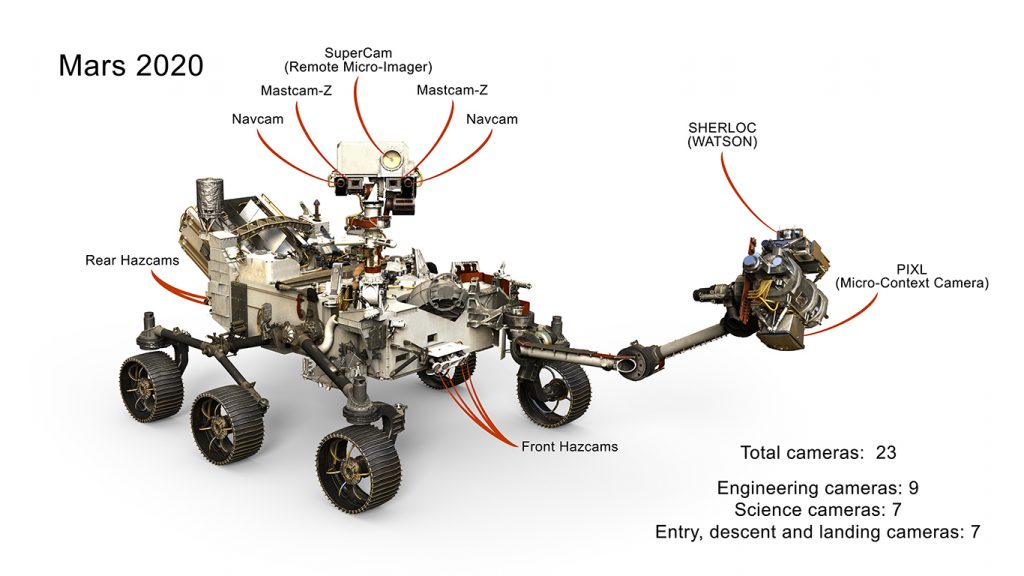
Once on Mars, the control of the Perseverance rover was transitioned from NASA JPL’s EDL team to the Perseverance Surface team. The Surface Phase of the Mars 2020 mission – or the phase of the mission that consists of the four main science objectives – began about twenty minutes after the touchdown.
Perseverance was sent to Mars to determine whether life ever existed on Mars, characterize the climate, characterize the geology, and prepare for the eventual human exploration of Mars. To achieve these massive science goals, the robotic astrobiologist was sent with an impressive suite of scientific research tools. Over the next 30 Martian days – called sols – the rover will begin to unfurl and begin testing the various pieces of hardware in preparation for exploring the delta of Jezero Crater.
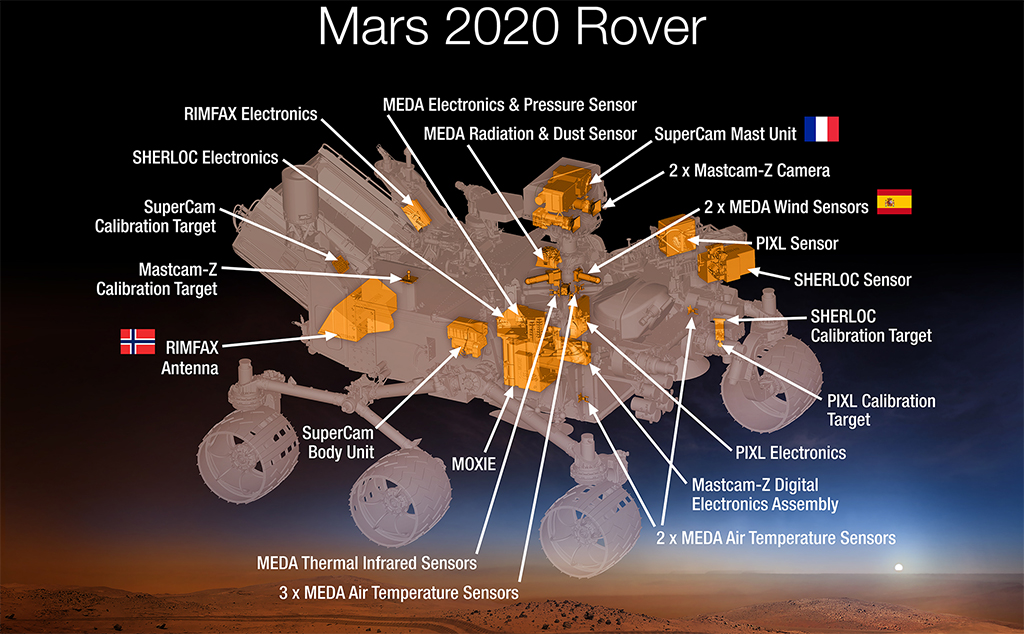
Deploying the stowaway
Perseverance not only took a roving science lab to Mars, but it also took the first rotorcraft helicopter to be deployed to another planet dubbed Ingenuity. Ingenuity is a small double-bladed rotorcraft weighing only about 4 pounds (1.8 kilograms).
After the initial 30 Ssls of stretching its legs, Perseverance will travel a short distance to find a flat area of the Martian surface to deploy the Ingenuity helicopter. Once deployed, the Ingenuity team will have a technology demonstration window of approximately 30 sols to complete the first flight test of Ingenuity – the first time powered, controlled flight will be attempted on another planet.
Landing is just the beginning
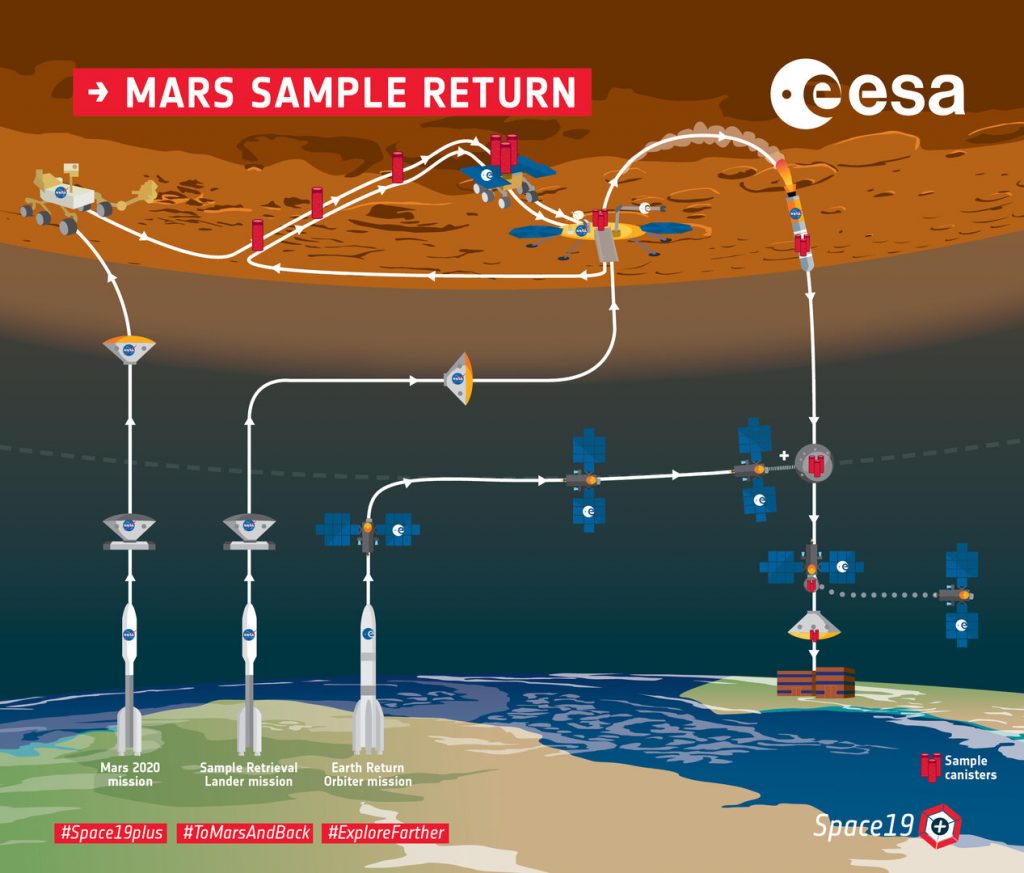
As exciting as landing on Mars was, it is only the beginning for the Mars 2020 Perseverance rover. The nuclear-powered astrobiology robot will spend the next Martian year excavating the surface of a very rich delta in the Jezero crater searching for the first evidence of ancient, microbial life.
Even more exciting is that Perseverance is only the first phase of a larger mission called the Mars Sample Return mission that will someday bring the excavated samples that Perseverance collects back to Earth in a joint effort between NASA and the European Space Agency.
Although the Perseverance mission is only intended to last one Martian year, Perseverance has the capacity to extend its mission to nearly 15 years thanks to its power source, a Multi-Mission Radioisotope Thermoelectric Generator (MMRTG) which produces a steady stream of electricity provided by the radioactive decay of plutonium-238. Perseverance could potentially outlast all of NASA’s other Mars missions.

News
Tesla Cybercab tests are going on overdrive with production-ready units
Tesla is ramping its real-world tests of the Cybercab, with multiple sightings of the vehicle being reported across social media this week.

Tesla is ramping its real-world tests of the Cybercab, with multiple sightings of the autonomous two-seater being reported across social media this week. Based on videos of the vehicle that have been shared online, it appears that Cybercab tests are underway across multiple states.
Recent Cybercab sightings
Reports of Cybercab tests have ramped this week, with a vehicle that looked like a production-ready prototype being spotted at Apple’s Visitor Center in California. The vehicle in this sighting was interesting as it was equipped with a steering wheel. The vehicle also featured some changes to the design of its brake lights.
The Cybercab was also filmed testing at the Fremont factory’s test track, which also seemed to involve a vehicle that looked production-ready. This also seemed to be the case for a Cybercab that was spotted in Austin, Texas, which happened to be undergoing real-world tests. Overall, these sightings suggest that Cybercab testing is fully underway, and the vehicle is really moving towards production.
Production design all but finalized?
Recently, a near-production-ready Cybercab was showcased at Tesla’s Santana Row showroom in San Jose. The vehicle was equipped with frameless windows, dual windshield wipers, powered butterfly door struts, an extended front splitter, an updated lightbar, new wheel covers, and a license plate bracket. Interior updates include redesigned dash/door panels, refined seats with center cupholders, updated carpet, and what appeared to be improved legroom.
There seems to be a pretty good chance that the Cybercab’s design has been all but finalized, at least considering Elon Musk’s comments at the 2025 Annual Shareholder Meeting. During the event, Musk confirmed that the vehicle will enter production around April 2026, and its production targets will be quite ambitious.
News
Tesla gets a win in Sweden as union withdraws potentially “illegal” blockade
As per recent reports, the Vision union’s planned anti-Tesla action might have been illegal.

Swedish union Vision has withdrawn its sympathy blockade against Tesla’s planned service center and showroom in Kalmar. As per recent reports, the Vision union’s planned anti-Tesla action might have been illegal.
Vision’s decision to pull the blockade
Vision announced the blockade in early December, stating that it was targeting the administrative handling of Tesla’s facility permits in Kalmar municipality. The sympathy measure was expected to start Monday, but was formally withdrawn via documents sent to the Mediation Institute and Kalmar Municipality last week.
As noted in a Daggers Arbete report, plans for the strike were ultimately pulled after employer group SKR highlighted potential illegality under the Public Employment Act. Vision stressed its continued backing for the Swedish labor model, though Deputy negotiation manager Oskar Pettersson explained that the Vision union and IF Metall made the decision to cancel the planned strike together.
“We will not continue to challenge the regulations,” Petterson said. “The objection was of a technical nature. We made the assessment together with IF Metall that we were not in a position to challenge the legal assessment of whether we could take this particular action against Tesla. Therefore, we chose to revoke the notice itself.”
The SKR’s warning
Petterson also stated that SKR’s technical objection to the Vision union’s planned anti-Tesla strike framed the protest as an unauthorized act. “It was a legal assessment of the situation. Both for us and for IF Metall, it is important to be clear that we stand for the Swedish model. But we should not continue to challenge the regulations and risk getting judgments that lead nowhere in the application of the regulations,” he said.
Vision ultimately canceled its planned blockade against Tesla on December 9. With Vision’s withdrawal, few obstacles remain for Tesla’s long-planned Kalmar site. A foreign electrical firm completed work this fall, and Tesla’s Careers page currently lists a full-time service manager position based there, signaling an imminent opening.
News
Tesla Semi program Director teases major improvements

Tesla Semi Program Director Dan Priestly teased the major improvements to the all-electric Class 8 truck on Thursday night, following the company’s decision to overhaul the design earlier this year.
Priestley said he drove the Semi on Thursday, and the improvements appear to be welcomed by one of the minds behind the project. “Our customers are going to love it,” he concluded.
Just drove the redesigned Semi. Our customers are going to love it. https://t.co/KZ88sf1CDL
— Dan Priestley (@danWpriestley) December 19, 2025
The small detail does not seem like much, but it is coming from someone who has been involved in the development of the truck from A to Z. Priestley has been involved in the Semi program since November 2015 and has slowly worked his way through the ranks, and currently stands as the Director of the program.
Tesla Semi undergoes major redesign as dedicated factory preps for deliveries
Tesla made some major changes to the Semi design as it announced at the 2025 Annual Shareholder Meeting that it changed the look and design to welcome improvements in efficiency.
Initially, Tesla adopted the blade-like light bar for the Semi, similar to the one that is present on the Model Y Premium and the Cybertruck.
Additionally, there are some slight aesthetic changes to help with efficiency, including a redesigned bumper with improved aero channels, a smaller wraparound windshield, and a smoother roofline for better aero performance.
All of these changes came as the company’s Semi Factory, which is located on Gigafactory Nevada’s property, was finishing up construction in preparation for initial production phases, as Tesla is planning to ramp up manufacturing next year. CEO Elon Musk has said the Semi has attracted “ridiculous demand.”
The Semi has already gathered many large companies that have signed up to buy units, including Frito-Lay and PepsiCo., which have been helping Tesla test the vehicle in a pilot program to test range, efficiency, and other important metrics that will be a major selling point.
Tesla will be the Semi’s first user, though, and the truck will help solve some of the company’s logistics needs in the coming years.









